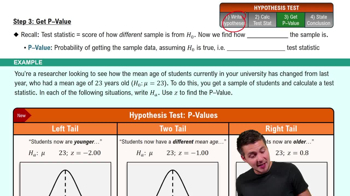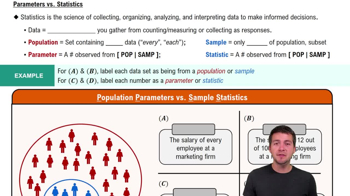Constructing Data Sets In Exercises 25–28, construct a data set that has the given statistics.
n = 6
x̄ = 7
s ≈ 2
 Verified step by step guidance
Verified step by step guidance Verified video answer for a similar problem:
Verified video answer for a similar problem:



 8:45m
8:45mMaster Calculating Standard Deviation with a bite sized video explanation from Patrick
Start learning